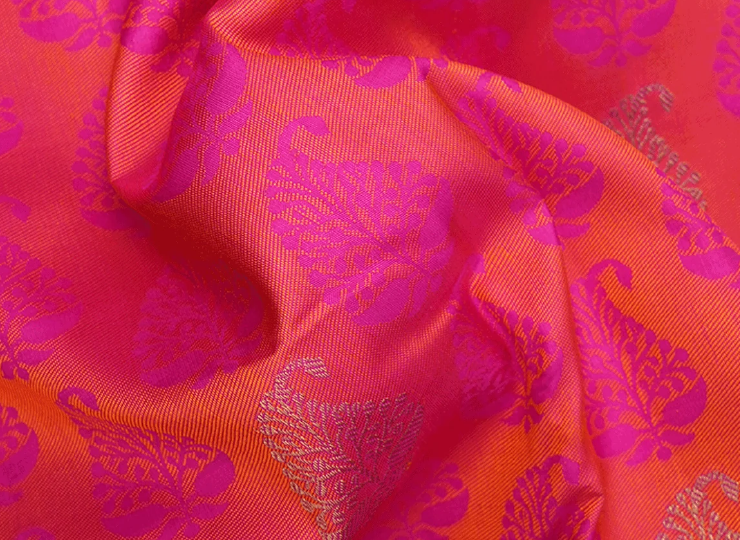Zari work, a symbol of opulence in Indian textiles, has captivated the hearts of fashion enthusiasts for centuries. This intricate craft, involving the weaving of fine metallic threads into fabric, has a rich history that mirrors the evolution of Indian fashion. In this blog, we explore the journey of zari work, focusing on the evolution of its color combinations and the role it plays in the evergreen charm of silk sarees.
The golden age of zari work
Zari work has its roots in the ancient civilizations of India, where it was initially crafted with pure silver and gold threads. The golden zari border became a symbol of royalty and was prominently featured in the attire of kings and queens. This period marked the beginning of zari work's association with luxury and elegance.

The advent of silver and copper zari
As time progressed, innovations in zari work led to the introduction of silver and copper zari borders. These variations offered a cooler tone compared to the traditional golden zari, providing artisans with a broader palette to work with. Silver zari borders, in particular, became popular for their subtle shimmer, making them a favorite for evening wear sarees.

The versatility of silk sarees with zari borders
Silk sarees have always been a canvas for showcasing the beauty of zari work. The lustrous fabric complements the metallic sheen of zari, creating an ensemble that exudes grace and sophistication. Whether it's a grand Kanjeevaram saree with a rich golden zari border or a delicate Banarasi saree adorned with intricate silver zari patterns, the combination of silk and zari is timeless.

The journey of zari work: embracing modernity
The journey of zari work is a testament to the adaptability of traditional crafts. With advancements in technology, zari work has seen a shift towards more sustainable and cost-effective options, such as the use of synthetic metallic threads. This transition has allowed zari work to become more accessible, ensuring its survival in the modern fashion landscape.

The evolution of colour combinations in zari borders
The color combinations used in zari borders have evolved significantly over the years. Traditionally, zari work was predominantly done in gold, complementing the rich hues of silk sarees. However, contemporary designs have embraced a wider spectrum of colors, including pastel shades and contrasting combinations. This evolution has opened up new avenues for creativity, allowing designers to experiment with bold and unconventional color palettes.

Conclusion
The evolution of zari work from ancient techniques to modern innovations is a reflection of the dynamic nature of Indian fashion. The journey of zari work, alongside the changing color combinations in zari borders, highlights the craft's ability to adapt while retaining its essence. As we continue to witness the transformation of zari work, one thing remains constant - its timeless allure and the elegance it brings to the traditional silk saree.





